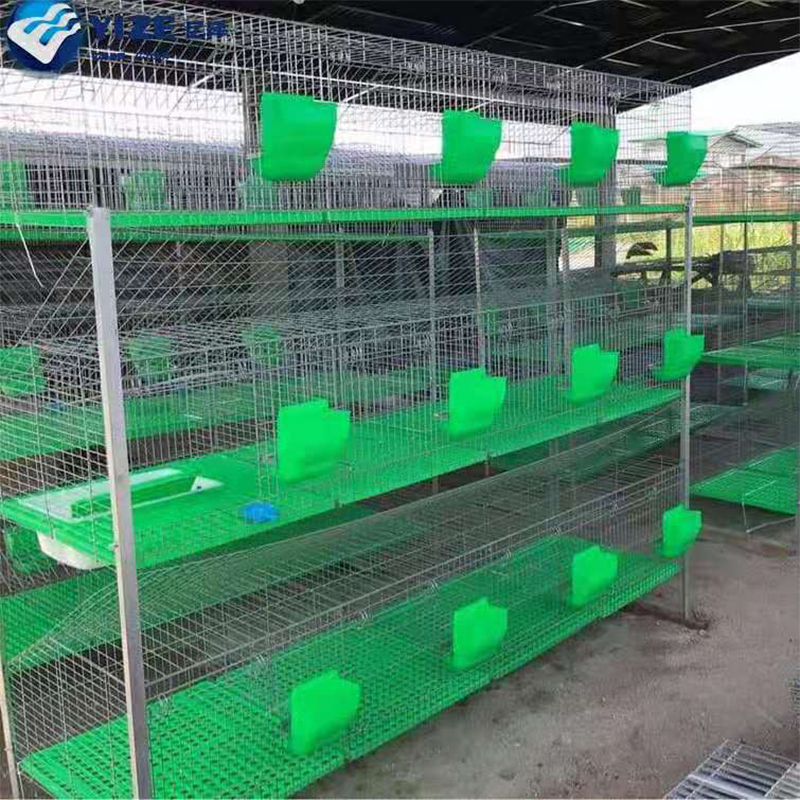Cages for Sustainable Layer Poultry Farming Practices and Innovations
Jan . 01, 2025 17:55 Back to list
Cages for Sustainable Layer Poultry Farming Practices and Innovations
Cages for Layer Poultry An In-Depth Overview
Poultry farming is a significant segment of the agricultural industry, contributing to global food security and economic stability. Among the various types of poultry, layer hens are especially important due to their role in egg production. The methods used to house these birds can greatly affect their welfare, productivity, and the quality of the eggs they produce. One of the primary systems for housing layer hens is the use of cages, a method that has sparked considerable debate among farmers, animal welfare advocates, and consumers.
Cages for layer poultry can be categorized into three main types conventional cages, enriched cages, and free-range systems. Conventional cages, often referred to as battery cages, have been the standard for many years. These cages typically house multiple hens in a confined space, often without the ability to express natural behaviors such as nesting or perching. While this system allows for efficient egg production and management, it has faced significant criticism for the welfare implications associated with keeping hens in such limited spaces.
Enriched cages were developed in response to growing concerns over animal welfare. These cages provide hens with more space than conventional cages and include features such as nesting boxes, perches, and scratching areas. The design of enriched cages aims to give hens more opportunities to engage in natural behaviors while still allowing for some level of controlled environment that helps to maintain production efficiency. Research has shown that enriched housing can lead to improved welfare outcomes, such as lowered stress levels and reduced aggressive behaviors among hens.
In contrast to caged systems, free-range and cage-free farming practices have gained popularity as consumers become more conscious of animal welfare. Cage-free systems allow hens to roam freely indoors, providing them with opportunities to engage in natural behaviors. Free-range systems take this a step further, allowing hens access to outdoor spaces where they can forage, dust bathe, and experience fresh air. While these systems are generally viewed as more humane, they also come with their own set of challenges, including higher costs and potential risks associated with predation and disease.
cages for layer poultry

The debate surrounding the use of cages for layer poultry often centers on the balance between productivity and animal welfare. Proponents of conventional and enriched cages argue that these systems are more efficient in terms of space, feed conversion, and ease of management. They point out that various studies have indicated that hens in cage systems can often produce more eggs with fewer health complications when compared to their free-range counterparts. Additionally, the risk of disease and mortality can be higher in free-range systems due to greater exposure to pathogens and predators.
On the other hand, critics of caged systems emphasize the ethical considerations associated with animal husbandry. Many animal welfare organizations advocate for the removal of cages entirely, arguing that animals have the right to express their natural behaviors and to live in environments that do not cause distress. This has led to a shift in consumer preferences, with many people actively seeking cage-free eggs as a way to support more humane farming practices.
As regulations and consumer preferences continue to evolve, the poultry industry is faced with the challenge of finding a balance between production efficiency and animal welfare. Many farms are investing in innovative technologies and practices that aim to improve the living conditions of layer hens while maintaining productivity. Solutions may include automated feeding and watering systems, enhanced ventilation, and improved biosecurity measures to protect flocks.
Ultimately, the future of layer poultry housing will likely involve a combination of systems that cater to the demands of both consumers and producers. While cages will likely remain a part of the industry for some time due to their efficiency, the move toward more humane practices and animal welfare considerations is undeniably reshaping the landscape of poultry farming. As awareness grows and practices evolve, the welfare of layer hens will continue to be a priority in ensuring a sustainable and humane poultry industry.
-
Automatic Feeding Line System-Pan Feeder Nipple Drinker|Anping County Yize Metal Products Co., Ltd.
NewsJul.29,2025
-
Hot Sale 24 & 18 Door Rabbit Cages - Premium Breeding Solutions
NewsJul.25,2025
-
Automatic Feeding Line System Pan Feeder Nipple Drinker - Anping County Yize Metal Products Co., Ltd.
NewsJul.21,2025
-
Automatic Feeding Line System Pan Feeder Nipple Drinker - Anping County Yize Metal Products Co., Ltd.
NewsJul.21,2025
-
Automatic Feeding Line System - Anping Yize | Precision & Nipple
NewsJul.21,2025
-
Automatic Feeding Line System - Anping Yize | Precision & Nipple
NewsJul.21,2025






